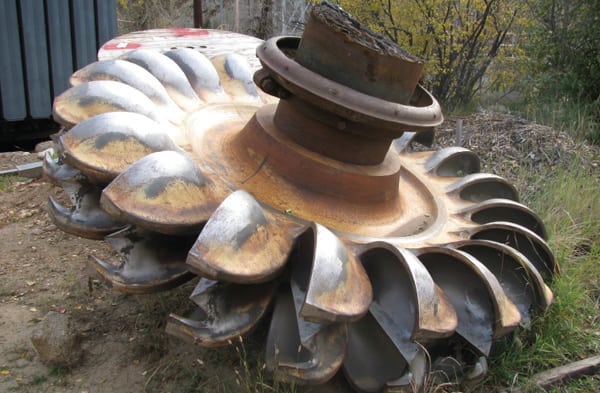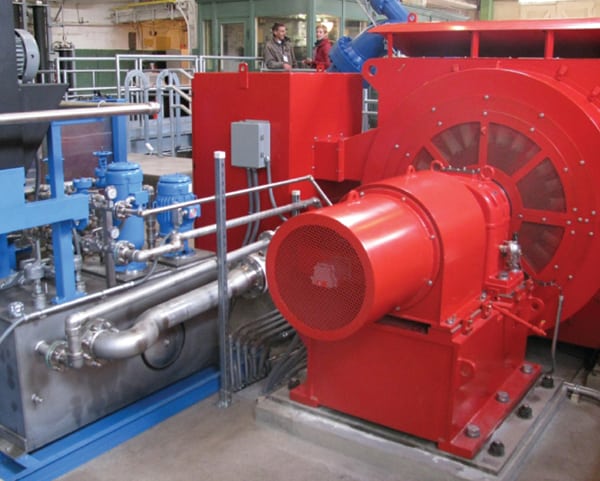Modernization of Century-Old Hydro Facility Yields Rich History
When the Boulder Canyon Hydroelectric Facility was built in the steep, forested mountains between Boulder and Nederland, Colo., in 1910, it was the highest head hydroelectric facility in the western U.S. It consisted of two 5-MW turbine generators, both of which were upgraded in the 1930s to double the plant’s capacity. The units ran until 2000, when one generator failed and was never replaced.
The second unit was recently replaced with a 5-MW turbine generator to “modernize” the century-old hydroelectric facility and keep it operational for 50 more years. Its developers say that though it is smaller, it produces 30% more power because it is more efficient.
For the City of Boulder, refurbishing the plant also has deep, historical significance. The city contracted URS Corp. and Native Cultural Services to complete detailed records of the historical equipment prior to removal in order to preserve the design, construction, and operational history of the original facility. As well as preparing a narrative history of the project, the city has preserved historical equipment in place for educational and display purposes (Figures 5 and 6). The research has yielded several interesting facts about the facility, including that it was the first structure in which acetylene welding in conjunction with the ball-peen welding procedure was used—a method that significantly advanced penstock technology.
 |
| 5. An artifact. The City of Boulder, Colo., preserved equipment, like this turbine that is more than 100 years old, when it modernized the Boulder Canyon Hydroelectric Plant earlier this year. Courtesy: City of Boulder |
 |
| 6. A new lease on life. Modernization of the Boulder Canyon Hydroelectric Facility left one failed 10-MW turbine in place and replaced the other 10-MW turbine with a new, highly efficient 5-MW turbine that has increased generation by 30%. Courtesy: City of Boulder |
The project is one of seven hydropower projects selected by the Department of Energy (DOE) for a total of up to $30.6 million in funding through the 2009 American Recovery and Reinvestment Act. These were cost-shared projects that upgraded existing hydropower facilities without requiring significant civil works modifications to dams. Like the Boulder project, several call for upgrading antiquated turbines: replacing 1940s and 1960s vintage turbines with stainless steel turbines and runners at four Alabama Power Co. hydro plants on the Coosa River, for example, or replacing four 90-year-old Francis turbines with stainless steel turbines (and increasing annual generation by 23%) at Alcoa’s Tapoco Cheoah plant in Robbinsville, N.C. The Boulder project received $1.18 million from the DOE toward an estimated project cost of $5.155 million.
This project, though small, has garnered wide attention, including a mention from the National Hydropower Association. The industry group said in October that similar upgrades could add nearly 9 GW of capacity across the country.
—Sonal Patel is POWER’s senior writer.